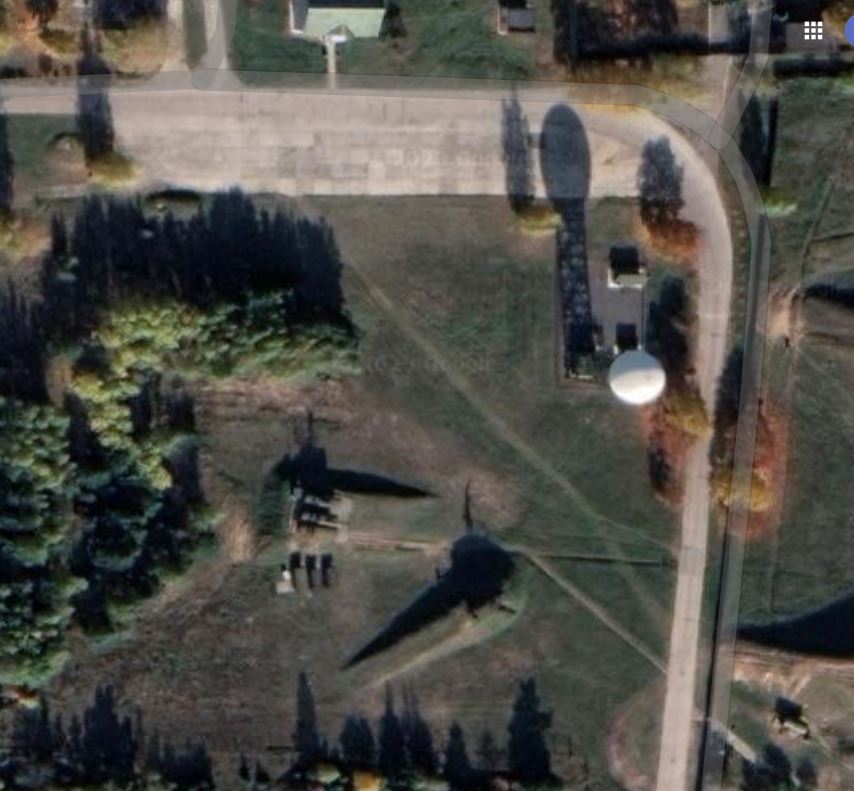
In the second part of Armada’s Russian IADS Redux series demystifying the country’s Integrated Air Defence System we look at the 12A6 Sopka-2 ground-based air surveillance radar.
Our first article in the series examined the Russian Air and Space Force’s (RASF) Resonance-N/NE Very High Frequency (VHF: 35 megahertz/MHz to 70MHz) ground-based air defence radar. Armada is collaborating with EW Analytics, a company that conducts open-source electronic warfare research, in our Russian IADS Redux series.
From a concept-of-operations perspective, the Resonance-N/NE seems to be used for long-range early warning of incoming air targets. This is distinct, yet complementary, to the 12A6 Sopka-2’s role. Open sources say the deployment of this radar commenced in 2014. Taking its name from the Russian translation for ‘hill’, it was designed as an air traffic control radar for military and civilian use. The 12A6 combines the tasks of several legacy radars deployed by the Russian Air and Space Force (RASF). It contains Primary and Secondary Surveillance Radars (PSR/SSR). The PSR provides range, azimuth and elevation information. The SSR provides Identification Friend or Foe (IFF) information.
According to EW Analytics, the 12A6 is an S-band (2.7 gigahertz/GHz to 2.85GHz) ground-based air surveillance radar. It has a range of circa 243 nautical miles/nm (450 kilometres/km). Open-source information says the radar can detect a target at over 328,084 feet/ft (100,000 metres/m) at circa 65nm (120km) range. Targets at circa 32,808ft (10,000m) can be detected at ranges of 216nm (400km). Importantly, these figures do not specify the radar cross section of the target which will influence detection ranges and altitudes.
Much like the Resonance-N/NE radars, the 12A6 feeds its data to what the RASF call Aviation Guidance Points (ACPs), the equivalent of ground-controlled interception centres. ACPs are used to control fighters intercepting air threats. It is possible that the Resonance-N/NE radars provide the initial detection of incoming air targets. Their lower VHF transmission frequencies means they will have less target precision than the S-band 12A6s. Nonetheless, the Resonance-N/NEs may be sufficient to provide indications of where the incoming targets may be.
As the targets move closer, they will be detected and tracked by the 12A6s. These will provide sharper detail on the target’s location to help interception. Fighters will be scrambled and vectored towards these areas by the ACPs. The 12A6 can also feed its data into mobile RASF VIP-117M3 mobile air command and control systems. Both the ACPs and VIP-117M3 trucks use R997-1M very/ultra high frequency radios to communicate with fighters. The RASF typically uses wavebands of 100 megahertz/MHz to 155MHz and 220MHz to 399MHz. The full equipment specifications of the ACPs will be discussed in future articles.
Interestingly, the 12A6 radars do not appear to be deployed alone at the ACPs. EW Analytics’ has determined that 1RL131 Terek (NATO reporting name P-18 Spoon Rest-D) VHF ground-based air surveillance and PRV-13 (Odd Pair) S-band (2.620GHz to 2.830GHz) height-finding radars are collocated with the 12A6s. The 12A6 is advertised to have only rudimentary electronic counter-countermeasures. It is possible that the 1RL131s and PRV-13s are used as back-ups should the 12A6 experience jamming. They may also provide additional track data to enrich the ACP’s recognised air picture.

Belarus and Ukraine
Russian sources stated that the RASF planned to acquire enough 12A6 radars to cover the whole country with an initial 20 being delivered by the end of 2014. Belarus activated a single 12A6 radar in January 2021 at Baranovichi airbase. This facility is around 150km (93 miles) north of the country’s border with Ukraine. Taking the radar’s location into account, it could look 162nm (300km) miles into Ukraine’s airspace. EW Analytics’ information says that an ACP is collocated at the airbase. The radar almost certainly feeds track data into this ACP.
Russian media reports from March 2022 said that Su-35 (NATO reporting name Flanker-E) combat aircraft fighting in Ukraine had flown from Baranovichi. It would not be surprising if these aircraft were under the control of this ACP and the radars deployed there. The same facility is also reportedly home to a 56N6E Protivnik-GE L-band (1.215GHz to 1.4GHz) ground-based air surveillance radar. The relationship between the 12A6 and 56N6E remains unknown. It is possible that the two radars provide redundancy in case one is unserviceable for any reason, for example if the 12A6 is jammed. They may also both be used to provide as rich a recognised air picture as possible. The 56N6E will be examined in more detail in future Russian IADS Redux articles. Stay tuned for more analysis on Russia’s IADS next month.

by Dr. Thomas Withington
Read our other Russian IADS Redux articles:
- Russian IADS Redux Part-1: Resonating with Resonance
- Russian IADS Redux Part-3: Strategic Skywatchers
- Russian IADS Redux Part-4: Missing Link
- Russian IADS Redux Part-5: Reset Password?













